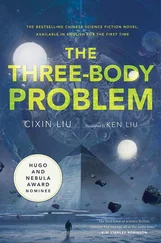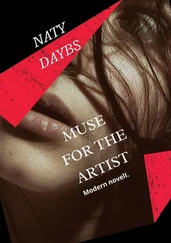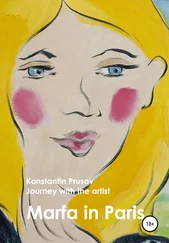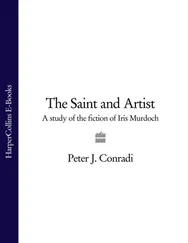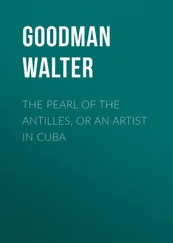CHOOSING THE SIZE OF THE FINISHED PAINTING
Having decided that you would like to use your sketch as the basis for a watercolour painting you then need to decide what size of paper would be best. If the sketch sits comfortably on the page it is probably useful to use a piece of paper for the finished work that is of the same proportions as the pages of the sketchbook. This seems obvious, but it does help!
As regards the size of paper, as ever, there are no rules. I suggest that you envisage the final picture and imagine what would look best. A detailed sketch of a busy street scene can look charming as a small picture, whereas a simple expansive beach subject might be perfect on a grand scale where the brushstrokes can be bold.

Sarah and Barbara Painting Florence
24 × 29 cm (9 1/ 2× 11 1/ 2in)
I had intended to depict the wonderful panorama of Florence. But who could resist concentrating on my friends, settled in the grass? I realized from my sketch that I needed to change the emphasis of the painting .
I came across the subject for the painting Hidden Treasure (opposite) a few miles from home. An old Jaguar car was well hidden in the foliage. I was a bit worried that the subject was rather whimsical and I was most anxious not to make it too pretty or ‘greetings cardish’. Although the light was poor and it was a little boggy underfoot I hoped that I would have time to do the painting on site.
I made a few sketches of the car and trees from different viewpoints. On this occasion I was using the sketchbook to investigate different compositions rather than with the intention of preparing a subject to work into a finished painting in the studio. The sketches would also be useful if interrupted during my painting.

Pisa
21.5 × 26 cm (8 1/ 2× 10 1/ 4in)
I tried to keep ‘fresh eyes’ as I looked at this familiar place. The sketch needed to be accurate and it helped to incorporate the movement of people into the composition .
By walking around the car and sketching I was both studying the subject and thinking about how to paint it. (I took a photograph, too, but when I looked at it later it was totally useless as the car was completely hidden in the shadows.) I was most anxious to convey the impression that the trees and car had become ‘one’ and to keep a lively feel to the foliage. I tried hard not to overwork the painting, and this is where sketches can help to form your ideas at the beginning.
In Sarah and Barbara Painting Florence on my sketchbook was invaluable. I was painting in Italy with my friends. After problems with onlookers I had tucked myself away in a quiet spot. We were in the Boboli Gardens overlooking Florence and the weather was showery. My friends settled down on the grass. They were much farther apart than shown in the painting and I used the sketchbook to bring them closer together and to position them sympathetically with the panorama in front of us. I had originally intended to concentrate on the wonderful view of Florence, but I could soon see from my sketch that my friends were the most important part of the painting! In addition to this the sketch also became my insurance policy in case my friends moved position, or the threatening rains arrived.
Churchyard, Stow on the Wold
38 × 43 cm (15 × 17 in)
This was painted on the spot with no preliminary sketch. I wonder if it would have gained or lost had I done one?
ACCURACY AND MOVING SUBJECTS
The leaning tower of Pisa (opposite) is so well known that it is difficult to keep the spirit of the place and to paint it as if you are looking at it for the first time. Also I had to ‘edit’ extensive ‘rescue’ works around the base of the building. It was hard not to exaggerate the ‘lean’ on the tower. In this case the sketch needed to be accurate as well as conveying the beauty of this exquisite structure. It was interesting to observe that the flagpole on top of the tower was vertical. Here the sketchbook was useful, too, to record the people and incorporate them into the study, rather than make them look as if they were an afterthought.
The painting of the Churchyard, Stow on the Wold (above) is included here even though I decided to make no preliminary sketch for it. I looked at the subject for some time and made decisions, and then just painted it. Sometimes I prefer not to give any concentration to the sketch and save all my resources for the painting. Bearing in mind the expression ‘analysis leads to paralysis’, I worry sometimes about the slight risk of over-preparing for a painting and going a bit stale, especially as watercolours often benefit from a feeling of spontaneity. But there is no substitute for doing a lot of thinking before and during the painting.
From these experiences I have tried to learn the best way of interpreting sketchbook studies. The major problems have arisen when my sketch looked very acceptable and I have simply used it to complete the finished work without ever establishing what the sketch was really about. Somehow, these pictures lack vitality. Although considerations such as composition, tonal balance and colour relationships are important in all work, it is the feeling that the painting evokes that makes it special.
To summarise: there are no rules. If you like your sketch, think about what it is that you like most. Extract the essence, and keep that idea uppermost in your mind as you tackle the painting. When you feel you have ‘said it’, it is time to stop.
4
ENHANCE YOUR COLOURS
How can I use colour to give vitality to a subject and make it appear almost more real than it is?
Answered by:
Paul Riley
When painting it is natural to regard colour as like for like. By this I mean that we tend to see the view before us as a kind of photograph where the colour is local, sometimes given vibrancy by the sun. However, when it is painted as such the result often looks disappointing, drab and dull, rather like an instant photograph. The reason for this is that the colour is not exaggerated enough.
It helps to remind yourself that you are compressing nature into a smaller format. The vast landscape, for example, is to be reduced and distilled to fit onto a piece of paper or canvas in such a way as to indicate the intensity of the sun’s effect on foliage, water, flowers or flesh.
Autumn Tree 1
29 × 39 cm (11 1/ 2× 15 1/ 4in)
This was painted in primaries and secondaries using only the six colours described in the text. They were applied in various ways from stripes to dots and merging soft edges .
This approach applies, I believe, to all media on all surfaces. Thus, when thinking about how to represent a blank white wall it is necessary to see all the subtle nuances of colours that are present in it in order to make it appear real.
For example, the blue of daylight from an adjacent window will merge into violet where the white of the wall picks up the red-orange electric light. This, in turn, can cause yellow casts, which can then be tinted again by light bouncing from the floor covering, whatever that may be. All this is apart from any surface blemishes on the wall that can add further colour variations.
Читать дальше



